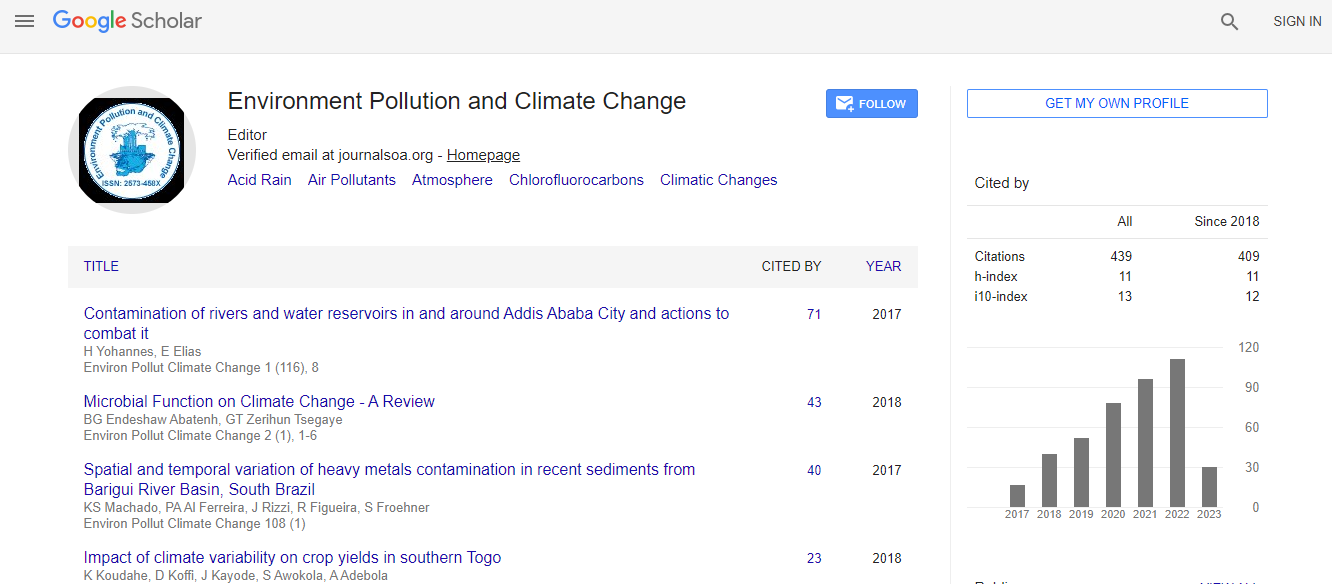Our Group organises 3000+ Global Events every year across USA, Europe & Asia with support from 1000 more scientific Societies and Publishes 700+ ������ Journals which contains over 50000 eminent personalities, reputed scientists as editorial board members.
������ Journals gaining more Readers and Citations
700 Journals and 15,000,000 Readers Each Journal is getting 25,000+ Readers
Citations : 672
Indexed In
- Google Scholar
- Publons
- Euro Pub
- ICMJE
Useful Links
Recommended Journals
Share This Page
Effects of composted sludge application on greenhouse gases emissions from paddy soil and heavy metals accumulation in soil and plant
Joint Event on 5th World Conference on Climate Change & 16th Annual Meeting on Environmental Toxicology and Biological Systems
Jing Ma, Yaping Shi, Haiyang Yu, Kaifu Song, Hua Xu and Guangbin Zhang
Chinese Academy of Sciences, China
Posters & Accepted Abstracts: Environ Pollut Climate Change
DOI:
Abstract
With the increase in municipal sludge, applying sludge in agriculture has been of great concern. A field experiment was conducted to investigate the effects of three different fertilization practices (CK, no N-fertilizer application; N240, applying N-fertilizer at a rate of 240 kg N ha-1; OF, applying composted sludge at a rate of 240 kg N ha-1) on methane and nitrous oxide emissions from paddy soils and heavy metals accumulation in soil and plant. The results showed that methane emission of treatment OF was 68.09 kg ha-1, being approximately 2-fold those of treatments N240 and CK (p<0.05). The N2O emission of treatment OF was 0.94 kg N ha-1, being 46% lower than that of treatment N240 (p<0.05) and 6-fold that of treatment CK (p<0.05). The contents of the total heavy metals in the soil were far below the national standard of environmental quality standards for soils for Grade II (GB 1518-1995) and no significant difference was observed among three treatments (p>0.05). Different heavy metals accumulated in different parts of the plant. The accumulation of Zn, Cd was straw>crust >seed, and Cr, Ni, Cu was crust>straw>seed. For treatment OF, the content of Cu in rice grain was 10% (p>0.05) less than that of treatment N240, but the contents of Cr, Zn and Cd in rice grain were 76%, 31% and 50% (p<0.05) higher than that of treatment N240, respectively. Recent Publications 1. Guangbin Zhang, Jing Ma, Yuting Yang, Haiyang Yu, Yaping Shi, et al. (2017) Variations of stable carbon isotopes of CH4 emissions from three typical rice fields in China. Pedosphere 27(1):52–64. 2. Minmin Sun, Yuan Zhang, Jing Ma, Wenping Yuan, Xianglan Li, et al. (2017) Satellite data based estimation of methane emissions from rice paddies in the Sanjing plain in northeast China. PlOS One 12(6):1–16. 3. Gang Liu, Haiyang Yu, Guangbin Zhang, Hua Xu and Jing Ma (2016) Combination of wet irrigation and nitrification inhibitor reduced nitrous oxide and methane emissions from a rice cropping system. Environmental Science and Pollution Research 23(17):17426–17436. 4. Xianfang Fan, Haiyang Yu, Qinyan Wu, Jing Ma, Hua Xu, et al. (2016) Effects of fertilization on microbial abundance and emissions of greenhouse gases (CH4 and NO2) in rice paddy fields. Ecology and Evolution 6(4):1054–1063. 5. Guangbin Zhang, Haiyang Yu, Xianfang Fan, Yuting Yang, Jing Ma, et al. (2016) Drainage and tillage practices in the winter fallow season mitigate CH4 and NO2 emissions from a double-rice field in China. Atmospheric Chemistry and Physics 16:11853–11866.Biography
Jing Ma has her expertise in greenhouse gases emissions and mitigation mechanisms in agriculture
E-mail: jma@issas.ac.cn

